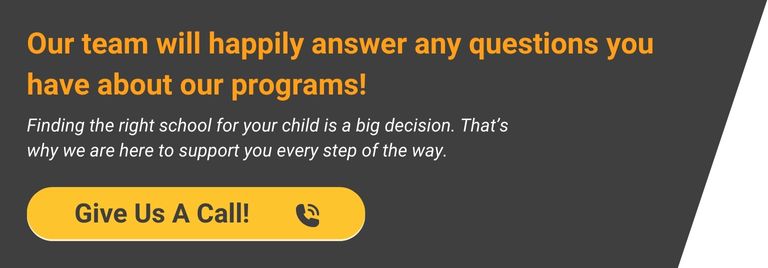Unconditional positive regard, or UPR, can make a huge difference in the emotional and academic well-being of your child, but unfortunately, there are some unconditional positive regard misconceptions that make it hard to fully embrace this way of interacting with children. That being said, UPR is essential to a child’s well-being, and it’s worth taking the time to understand how to use UPR effectively.
Imagine being 10 years old, and hearing about problems with your behavior for most of your life.
Suddenly, you enter an academic setting where you’re treated with support, kindness, and acceptance, even when your behavior or neurotype doesn’t line up with the norm.
Now, you can stop focusing on behaviors you have little control over and start focusing on learning. UPR makes you feel valued and safe, and that’s exactly what you need.
As a parent, this picture feels ideal, but if you’re going to start changing your interactions with your child and expecting educators to do the same, then be prepared to take on some misconceptions. Here are some of the most common misconceptions around UPR, and the truth behind them.
1. UPR means accepting harmful behaviors
Sometimes, children — especially neurodiverse children — exhibit behaviors that are harmful to themselves or others. UPR does not mean accepting these behaviors.
It does mean understanding why these behaviors occur and not viewing the child as less valuable because of undesirable behaviors.
When an educator embraces UPR, they can reject the action and teach the child now to avoid repeating that action, while maintaining that the child has value.
This distinction is seen more clearly when using unconditional positive regard in counselling. When harmful behaviors, like self-harm, arise in the counseling world, a counselor approaching them with UPR will not judge them as being right or wrong.
Instead, the counselor will approach them as maladaptive, trusting the client’s ability for growth as they guide them toward better coping mechanisms without judgment on the behavior itself or the person.

2. UPR is the same as liking someone
While teachers at Education Alternatives love what they do and like the children in their classrooms, UPR has nothing to do with whether a child is liked. There are days and sometimes even people in your life that you aren’t going to have a particular fondness for, but you can still approach them from a viewpoint of unconditional positive regard.
This misconception stems from confusion between unconditional love vs. unconditional regard.
According to Simply Psychology, unconditional love means providing affection without limits. In contrast, UPR provides non-judgmental support and safety, and avoids harsh reactions to small mistakes.
3. UPR removes accountability
This distinction between love and regard leads to the third misconception. Having unconditional positive regard for an individual does not mean avoiding boundaries and consequences.
To understand this, you must first ask: what are the three core conditions of unconditional positive regard?
They are:
- Support
- Kindness
- Acceptance
An educator or counselor can offer these three conditions to a child, even while setting up healthy boundaries and consequences for negative behaviors by offering non-judgmental support and accepting the child, even when the child’s behavior is not ideal.
In other words, support, kindness, and acceptance occur regardless of the person’s behavior.
4. UPR requires no therapist boundaries
Actually, UPR does the opposite. Rather than disregarding boundaries, treating everyone with support, kindness, and acceptance means treating one’s own self this way, and that supports healthy self-care and integrity for therapists as well as educators.
Picture a therapy setting where a child becomes overly attached or close to the therapist. This scenario is common, especially for children who have received much negative feedback for their behavior or differences.
Suddenly, a kind, empathetic adult is accepting them for who they are, even when they act out.
They may start to cling to that therapist, and the relationship may start to become unhealthy.
When the clinician is approaching the child with UPR, they can respectfully encourage the child to look within themselves to find the emotional fortitude they need to grow without too much dependence on the clinician.
They can respectfully say, “I know this situation feels overwhelming and like you cannot handle it on your own, but I also know you have the internal strength to handle it. We can talk about it in our sessions, but I would like you to journal when something comes up outside of our time together so we can discuss it when we meet again.”
This statement encourages the child to use their own inner strength, rather than constantly coming back to the therapist and crossing therapist-client boundaries.
5. UPR is the only thing that matters in therapy
UPR was an idea coined by well-known psychologist Carl Rogers. It is one of three core conditions that allow for psychological growth, and it must work hand in hand with the other two.
UPR works with congruence and empathy to support someone enough that they are equipped to grow.
Understanding congruence and empathy
According to Carl Rogers’ theory, congruence is a type of genuineness that comes from self-knowledge and self-awareness. A therapist can only help others grow when they are able to understand themselves and be open and transparent with the people they help.
Empathy is a deep level of understanding. A therapist listens to understand the client’s internal world and motivations, and then communicates understanding and acceptance to the client.
These two must work hand-in-hand with UPR for therapy and education to work. At Education Alternatives, we strive to have all three in our classrooms and therapy sessions, so our students can grow.
6. UPR is unrealistic
When a professional approaches clients or students with UPR, they aren’t turning a blind eye to the truth their clients or students present. Rather, they’re taking a professional stance that they will accept and show positive regard to those under their guidance, no matter what.
This stance may seem like a subtle shift, but in reality, it makes a tremendous difference in the effectiveness of their work and the personal growth of the people they’re guiding.
7. UPR only applies in therapy rooms
While UPR is a core component of successful therapy, and is discussed often in the world of psychology, it applies to all areas of leadership. If you’re leading people, and you approach those people with UPR, you’ll see them thrive.
UPR works in the classroom, in parenting, and in the workplace. By accepting people without judgment, you can more effectively lead them to their highest potential.
What is the problem with unconditional positive regard?
So, what is the problem with unconditional positive regard? If you debunk these 7 biggest misconceptions, there aren’t many problems with this professional stance.
In fact, at Education Alternatives, we believe it can have one of the biggest positive influences on our students, especially if they come to us with negative experiences in their past. When someone falls victim to these unconditional positive regard misconceptions and uses UPR without boundaries and consequences, it can have a negative effect on students. When embraced alongside other healthy education and therapeutic practices, and with healthy boundaries in place, UPR can make a big difference for students.
Give your children a positive experience with Educational Alternatives
For students with neurological differences or behavioral concerns, school can be an overwhelmingly negative place. It’s hard to thrive when your behavior causes people to view you negatively.
That’s not the case at Educational Alternatives.
We embrace UPR along with mental health and educational support tailored to each child’s unique learning needs, providing an environment where children feel supported and respected, allowing them to thrive. Learn more about our services to see how we create the right structure for educational and personal growth.
If this sounds like the kind of learning environment your child would thrive in, contact us to explore the right program for your child.
